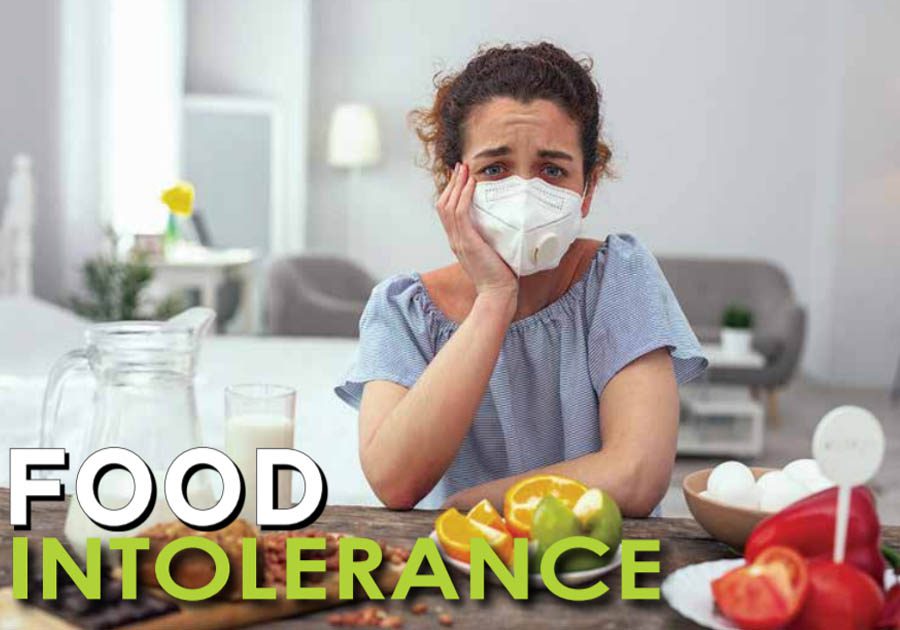Food intolerance is a broad term that is used to describe a wide range of adverse reactions to foods that cause symptoms after eating some foods. These include stomach pain, bloating, gas/flatulence, diarrhoea, irritable bowel syndrome (IBS), rashes, hives (urticaria), recurrent mouth ulcers or headaches. If food intolerances are not properly managed, these symptoms can adversely affect general health and wellbeing.
Food intolerances are sometimes confused with, or mislabeled as food allergies. Food intolerances involve the digestive system, whilst food allergies involve the immune system. Unlike Immunoglobulin E (IgE) antibody mediated food allergy, food intolerances (except for sulphite and benzoate reactions) do not cause anaphylaxis (severe allergic reactions), that can be life threatening.
Non-IgE mediated food allergies are sometimes called food intolerances, however these conditions involve the immune system, so they are different to food intolerances that do not involve the immune system. Natural substances in foods can cause food intolerances.
Foods are composed of proteins, carbohydrates, fats, various nutrients and several natural chemicals. These following naturally occurring substances often add flavour and smell to food but they can trigger symptoms in some people.
• Lactose intolerance is an example of an enzyme deficiency, which occurs when people are born with, or develop, insufficient lactase enzymes to digest lactose in cow’s milk and other dairy products. This can result in bloating, gas/flatulence, stomach upset and diarrhoea after having dairy products. This condition is uncomfortable but not dangerous and does not cause rashes or anaphylaxis. Diagnosis is by temporary elimination of lactose and reintroduction.
• Monosodium glutamate (MSG, additive numbers 621 and 625) was originally isolated from seaweed in 1908 by a Japanese chemist. Glutamates also occur naturally in such foods as camembert cheese, Parmesan cheese, tomatoes, soy sauce and mushrooms. MSG stimulates nerve endings, which may be why it is used as a flavour enhancer when it is added to food.
• Vasoactive amines such as tyramine, serotonin and histamine are well known triggers of migraines in some people. They are present naturally in pineapples, bananas, baked meat, vegetables, red wine, wood-matured white wine, avocados, chocolate, citrus fruits and mature cheese. Amines can act directly on small blood vessels to expand their capacity. This may be why they can trigger flushing, migraines and nasal congestion in some people.
• Salicylates are natural aspirin like compounds that are present in a wide variety of herbs, spices as well as fruit and vegetables. Reactions to salicylates may be even more common than reactions to artificial colours and preservatives. Aspirin can trigger hives by acting directly on skin mast cells, and therefore salicylates can also worsen hives in some people. • Toxins can cause severe symptoms. Contamination of food with microorganisms (such as bacteria) or their products (due to spoilage) can cause food poisoning due to toxins. For example, if some types of fish are stored poorly, their gut bacteria can convert histidine to histamine, resulting in allergy like symptoms.
• Irritants. Caffeine and curry are gut irritants that can trigger indigestion in some people. It is important to realise that reactions to these substances are not due to allergy.
DIAGNOSIS OF FOOD INTOLERANCES
Food intolerances can often be difficult to diagnose. Some substances within foods, and the quantity (dose) of foods eaten, can increase the frequency and severity of symptoms. These include stomach pain, bloating, gas/ flatulence, diarrhoea, IBS, rashes, hives or headaches, Diagnosis of adverse reactions to foods should be based on clinical history, response to treatment and testing. Skin prick tests or blood tests for allergen specific IgE are negative for food intolerances.
However, they are useful if the history suggests that food allergy (as opposed to intolerance), is the problem.
THE BEST APPROACH IS TO FIRST SEE YOUR DOCTOR TO:
• Make a diagnosis, such as migraine headaches, hives, IBS, recurrent mouth ulcers.
• Check for other conditions that may be causing symptoms.
• Determine if diet or other factors play a role in causing symptoms.
• Identify individual triggers to be avoided. Management of food intolerances may involve elimination diets Once a diagnosis is made, a clinical history may help identify the role of diet or other factors that make symptoms worse. The only reliable way to determine if diet is playing a role is by people being placed on a temporary elimination diet, under the supervision of a dietitian and medical practitioner.
If removing the food from the diet helps, this is followed by challenges under controlled conditions to identify food triggers which may need to be avoided in the future.
It is important that elimination diets are temporary, so they should only be undertaken for a short term trial period, under strict medical supervision, as a diagnostic tool. Prolonged restricted diets can lead to problems with adequate nutrition, particularly in children.
It is important to note that low salicylate and low amine diets should not be used for investigation of food intolerance until other potential causes for reactions are explored. Next edition we will discuss other adverse reactions to food.
